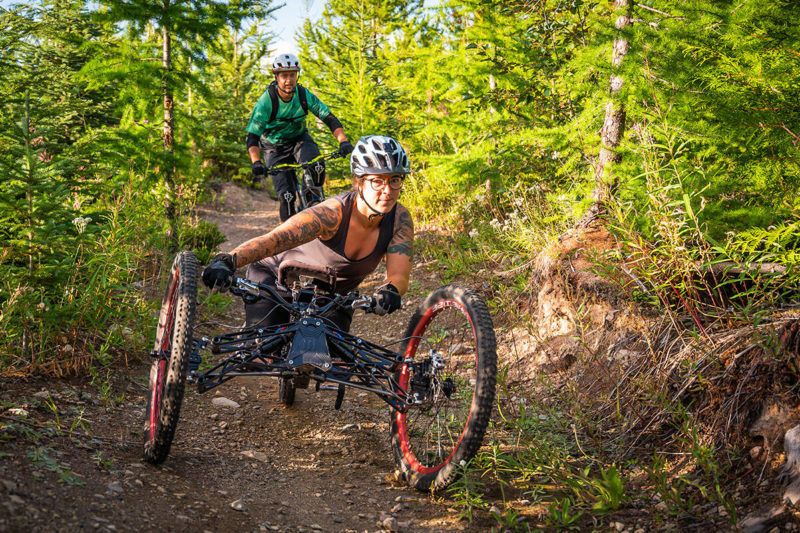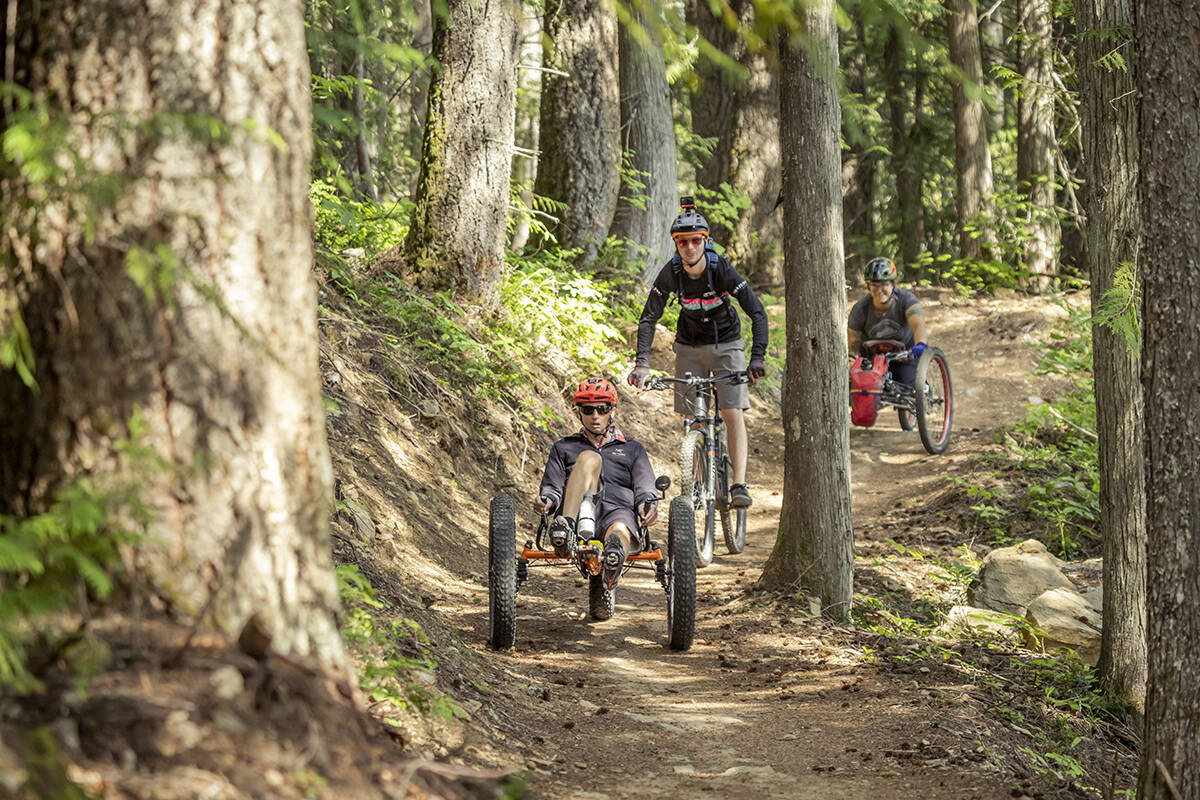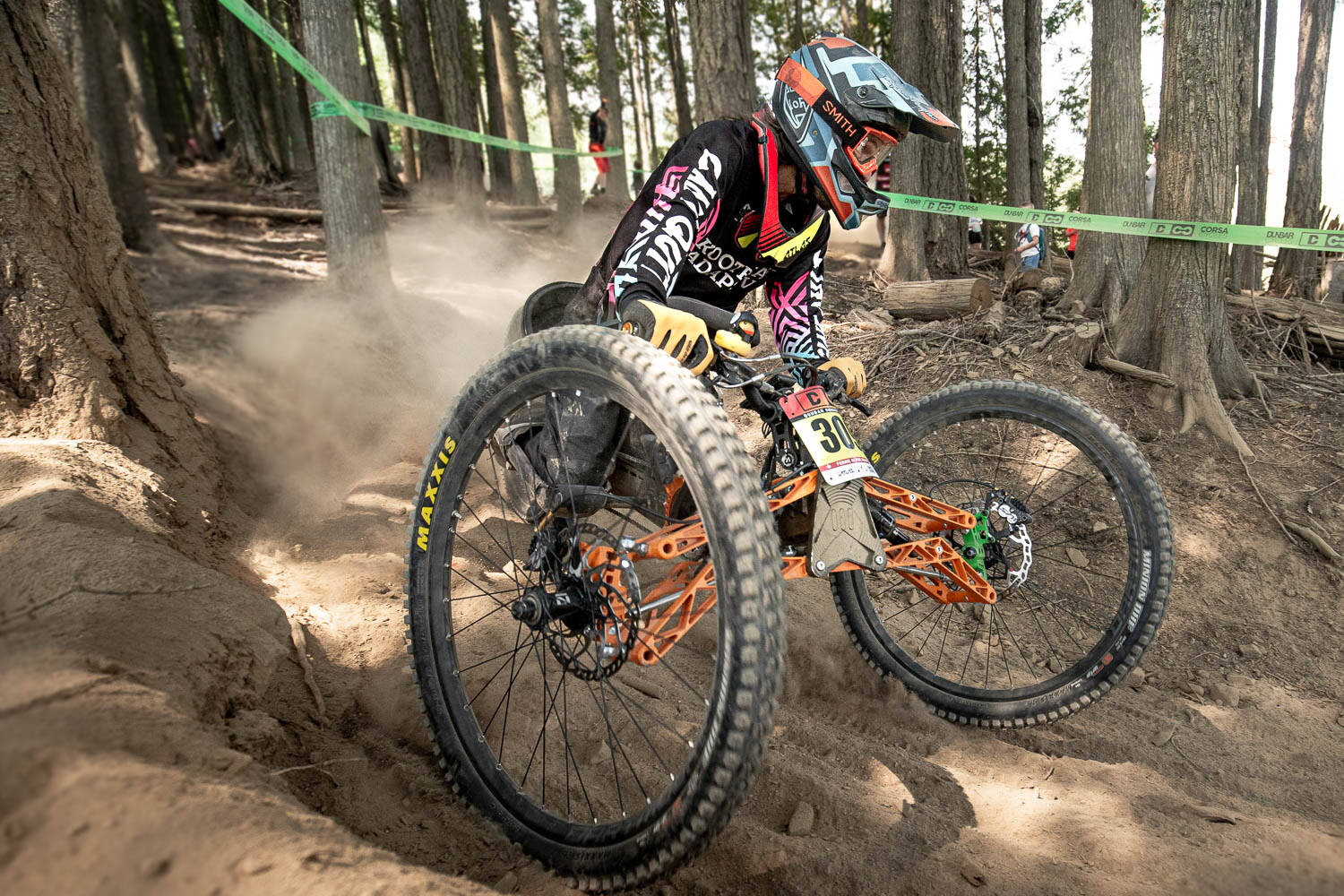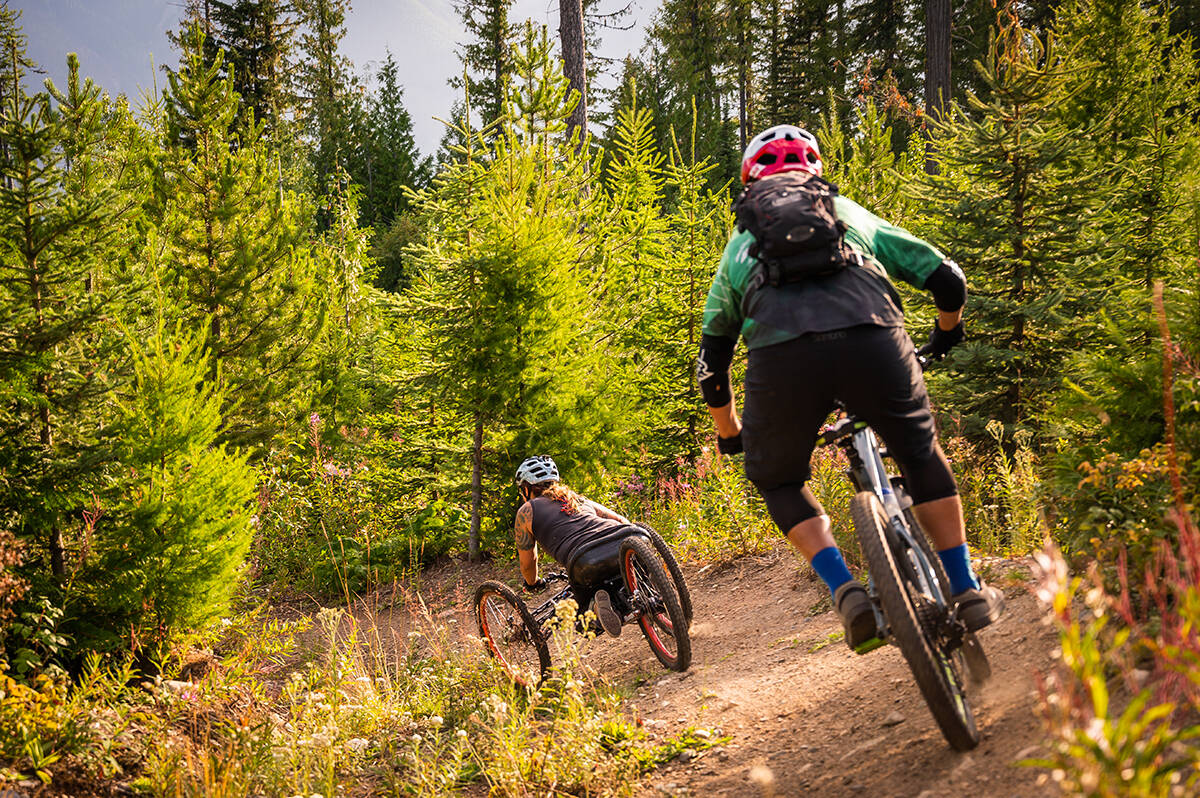Trails are a major component of British Columbia’s tourism industry, and a group in the Kootenays is on a mission to make them more inclusive.
No, that doesn’t mean paving a wheelchair ramp to the top of Pulpit Rock in Nelson or flattening the Canadian Rockies to make the multi-day Rockwell Trail universally accessible. It means adapting physical and social environments to allow more people to get active and challenge themselves in the great outdoors.
“Adaptive mountain biking uses a three- or four-wheel off-road hand cycle in different positions, and often with an electric-assist motor. These bikes are an important part of this discussion because they have revolutionized access to the backcountry and access to a greater difficulty of trails. Not to mention, they are super fun,” says Janis Neufeld, a founding member of the Kootenay Adaptive Sport Association (KASA).
Universal trails are designed to increase participation by as many people as possible, regardless of age, size, ability or disability. Picture a trail with a compact surface that’s relatively flat and wide, with regular benches. Universal trails improve access, but are they inclusive?
For a mountain biker seeking thrills and challenges, a wide, flat rail trail is accessible, but it doesn’t include their interests. That’s where KASA comes in. They’ve developed trails in the Kootenays suitable for adaptive mountain bikes, and established guidelines to help other trail builders.
“This rating system takes into account recommended equipment, trail width, trail surface, obstacles, bridges, grades, the camber, berms, corner radiuses, exposure… and has been a great resource for increasing access and inclusion on our trails,” Neufeld says.
Integration increases empathy and understanding
“Increasing access and inclusion into our trails needs to be done through integrating accessibility into an existing network to allow for meaningful intersection, interaction, encouraging empathy, relatedness, and normalization of differing abilities and interests,” Neufeld says.
One of the added benefits of building accessible trails for adaptive mountain bikes is that they’re also great for families, kids and seniors. Removing barriers to participation allows more people to enjoy BC’s beautiful trails and experience the adrenaline of rushing down a mountainside.
Try adaptive mountain biking next summer
The Kootenay Adaptive Sport Association hosts clinics, retreats and integrates adaptive mountain biking into competitions across BC. They also offer rentals across the province, and lessons for beginner riders and those hoping to level up.
They’re eager to help other trail associations integrate adaptive mountain biking into their trail systems, if you’re looking for guidance on getting a local program rolling.
“The unique concentration of accessible and inclusive infrastructure has attracted the attention of the local mountain biking community and beyond. Mt. Abriel (Nakusp) in conjunction with the surrounding trails has the potential to become a global destination for athletes with disabilities,” writes the KASA website.
Whether you’re hoping to see these bikes in action from the safety of the sidelines or take a turn down the trail, visit trailforks.com/trails/all/adaptive to find a trail near you.
FUTHER READING: In Nelson’s forests, trail building becomes an art
FUTHER READING: A Canadian first: New ice bikes wheel into Calgary’s Bowness Park!














 It’s snow time in British Columbia!
It’s snow time in British Columbia!